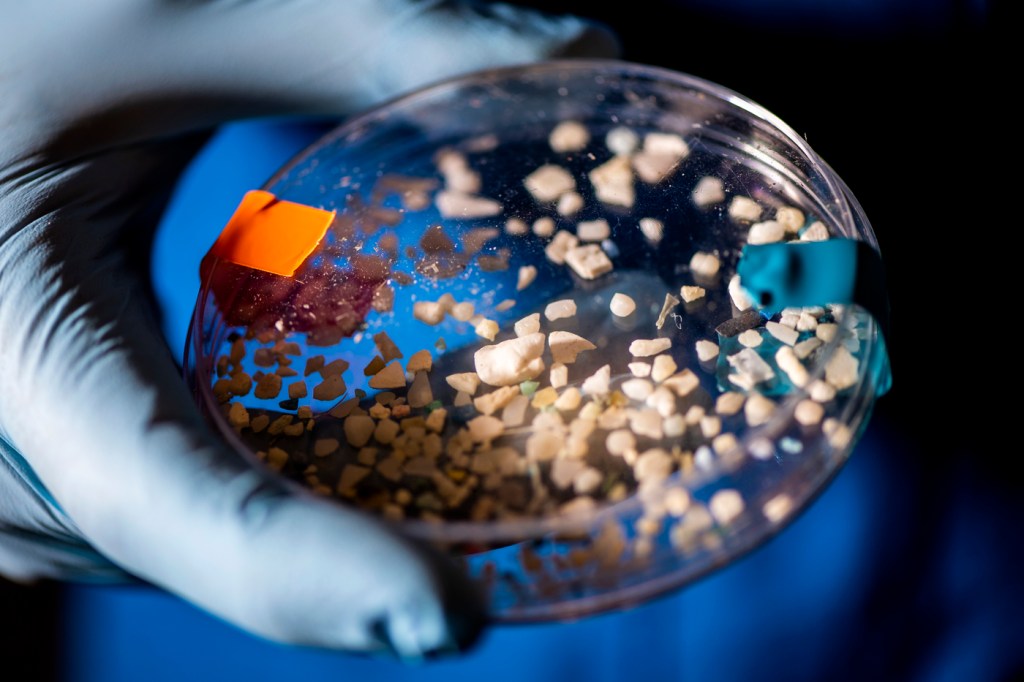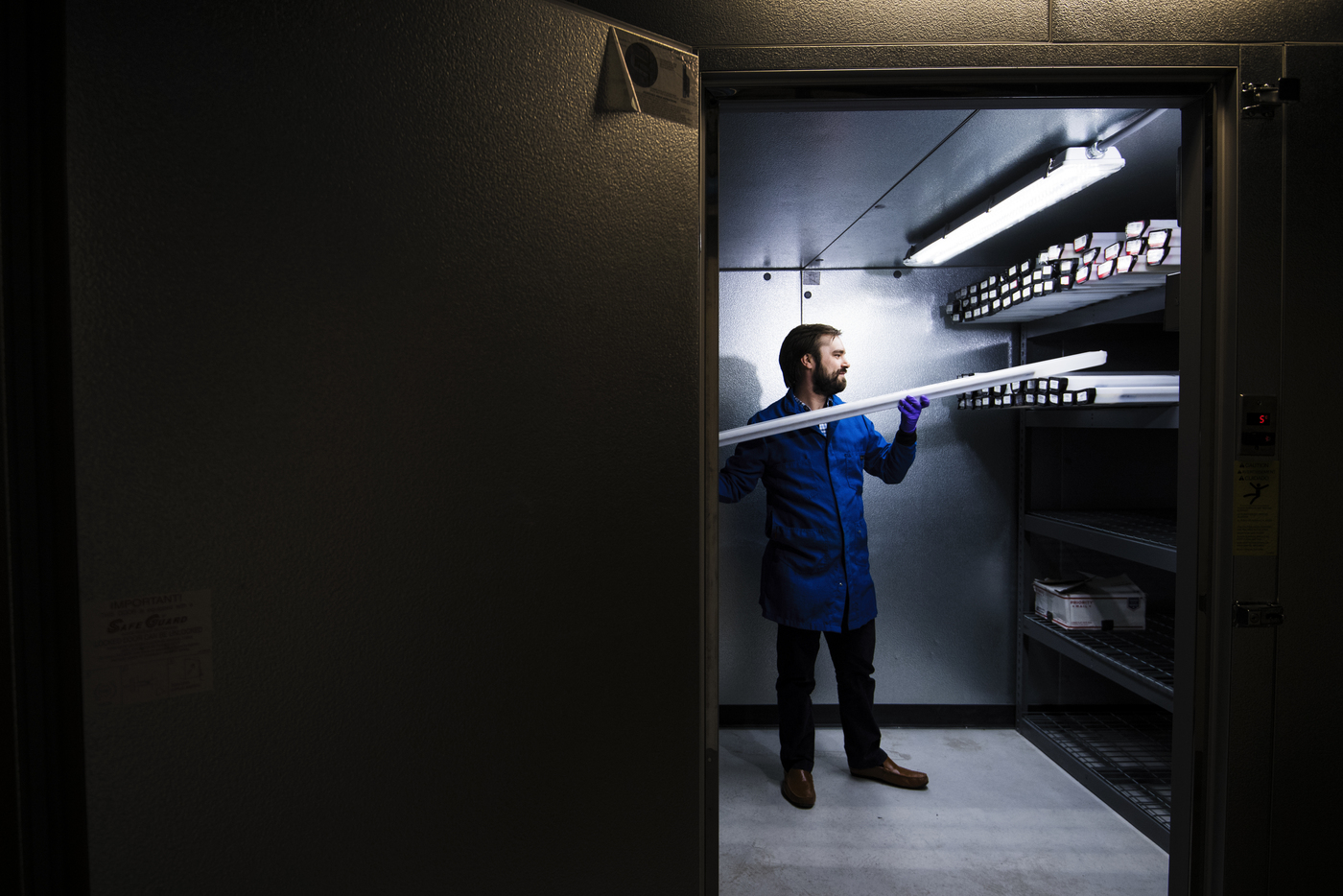Our plastic pollution problem may have more significant consequences than we think

Plastics are everywhere. They’re in our water, in our food, and even in the air we breathe. They show up in remote glaciers and deep in the ocean.
And plastic is largely made up of carbon, which is released into the environment when that trash breaks down. So when Aron Stubbins was planning lectures about the Earth’s carbon cycle, he decided to take a look at how much carbon that plastics were adding to our planet’s natural systems.
What he found was “surprising,” says Stubbins, a professor of marine and environmental sciences, chemistry and chemical biology, and civil and environmental engineering at Northeastern. “It was clear that there were some environments in which plastics are now a significant amount of the carbon. There’s as much plastic-carbon as there is natural carbon in some ecosystems.”

Aron Stubbins, professor of marine and environmental sciences, chemistry and chemical biology, and civil and environmental engineering, inspects microplastics from the open ocean in the Mugar Life Sciences Building. Photo by Ruby Wallau/Northeastern University
So Stubbins reached out to other colleagues that study plastics and natural sediment cycles to confirm his calculations and discuss the implications. With their input, Stubbins put together a sketch of the global plastic-carbon cycle, and further calculated the amount of carbon that plastics add to the environments that they pollute. Their results were published in the journal Science last week.
“We’ve added a new material plastic carbon cycle alongside the natural carbon cycle,” Stubbins says. The implications of that are still unknown, he says, but so much carbon introduced by plastic pollution into the natural environment could have a ripple effect across life forms, ecosystems, and even the planet’s climate.
Plastic production and use began in earnest around 1950. By 1962, Stubbins found, the amount of carbon in plastics that had been created surpassed the total amount in all humans on the planet. By 1994, plastic-sourced carbon topped the amount of the chemical element in all animals. We all are, after all, carbon-based life-forms. “The plastics are just building up,” he says.
That plastic-sourced carbon shows up in all kinds of ecosystems around the globe, but some of the most significant accumulation occurs in the surface waters of subtropical ocean gyres, where ocean currents cycle in just such a way that floating materials accumulate in a sort of patch.
And those areas of the ocean are naturally low in carbon, Stubbins says. So, if the plastics that end up there are dissolving and releasing their carbon into that ecosystem, it could significantly alter the chemistry there.
It’s possible that it might also alter the climate, he adds. That’s because a thin layer on the surface of the world’s oceans plays an important role in the exchange of material between the ocean and the atmosphere. The aerosols and trace gases involved in that exchange can “change atmospheric chemistry, which can change climate,” he says. “So if there’s this high concentration of plastics in that particular layer at the very surface of the sea, then that could have ramifications for the lower atmosphere.”
For scientists trying to understand the natural carbon cycle and climate change, the presence of so much plastic-originating carbon could throw off their calculations, Stubbins says. “We think we’re only measuring natural organics, and so if we’re measuring plastics at the same time, then that skews our data. So we need to be aware that there may be plastics in our samples, particularly in these systems.”

Samuel Muñoz, assistant professor of marine and environmental sciences, and civil and environmental engineering, works at the Marine Science Center on Northeastern’s Nahant campus. Photo by Adam Glanzman/Northeastern University
There’s still a lot to learn about how plastics are influencing the Earth’s natural systems, says Samuel Muñoz, assistant professor of marine and environmental sciences, and civil and environmental engineering at Northeastern. One question that he’s particularly intrigued by is how the flow of sediments changes around the world with bits of plastic mixed in.
“We’ve spent more than a century trying to understand how sediment moves through the environment,” he says. “And now there’s this whole other material that’s, in some places, fairly important. But the mechanisms by which it moves are going to be different. Sometimes it’ll float instead of sink. Sometimes it can become airborne more easily. Sometimes it won’t settle out in a water column as easily as sediment does.”
“Yeah, plastics are everywhere, but there’s a lot we don’t know about them,” Muñoz says. “I see this paper as almost a call to arms to scientists” to figure out the myriad ways that this material changes the Earth’s systems.
For media inquiries, please contact Shannon Nargi at s.nargi@northeastern.edu or 617-373-5718.





